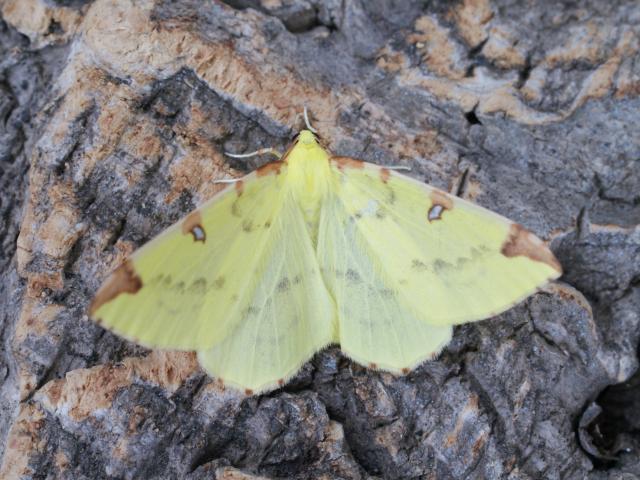

Moth recording is easy. If you see a moth, or one of its immature stages such as a caterpillar, anywhere in the UK, Isle of Man or Channel Islands and you can identify it, then you can make a record and contribute to moth recording and conservation. The details that are needed are very simple; you can do as much or as little as you like and your contribution will still be worthwhile.
 Perhaps you just note down day-flying moths or Cinnabar caterpillars (pictured left) when you are out looking for birds, butterflies or plants; perhaps your garden is visited by a Humming-bird Hawk-moth and you take part in our online survey for that species; or perhaps you'll be swept along by the dazzling diversity of moths and the excitement of never knowing what is going to appear in the moth trap. In every case, your sightings can improve our understanding of moths and further their conservation.
Perhaps you just note down day-flying moths or Cinnabar caterpillars (pictured left) when you are out looking for birds, butterflies or plants; perhaps your garden is visited by a Humming-bird Hawk-moth and you take part in our online survey for that species; or perhaps you'll be swept along by the dazzling diversity of moths and the excitement of never knowing what is going to appear in the moth trap. In every case, your sightings can improve our understanding of moths and further their conservation.
Aside from simply happening upon moths, you may want to improve your chances of finding or attracting moths. There is much information on these pages to help you, including:
- How to start "mothing" - a simple factsheet about finding and recording moths
- Moth Recorder's Handbook - a comprehensive guide to finding and identifying moths.
- Moth traps and other equipment.
- Identifying moths - a simple factsheet providing an introduction to moth identification.
- Guide to Difficult Species - an online book providing detailed information on the identification of difficult larger moths.
- Guidance notes on moth recording.
Some suggestions for getting started...
- Buy, make or borrow a moth trap. The latter is a great idea when you are just getting started. Ask your County Moth Recorder, local moth group or your local Branch of Butterfly Conservation Branch if they have moth traps for loan.
- If you don't want to start with a moth trap, you can attract moths to outside lights or leave your curtains open so that moths settle on the outside of the window. One recorder identified 100 species over course of several years on the outside of his kitchen window while he was washing up! Bathrooms also make good moth traps, leave the light on and the window open and record what comes in. However, you will see more moths with a moth trap.
- Buy or borrow a modern field guide to the macro-moths.
- You don't have to identify every moth you catch; start with the big, bright, distinctive ones - difficult macro-moths and micro-moths can frustrate even experienced moth recorders.
- Check your trap in the morning, when the moths are still and relatively easy to observe.
- Make contact with local moth recorders; they will probably be able to help you with identification from photographs etc.
- Attend local moth trapping events.

